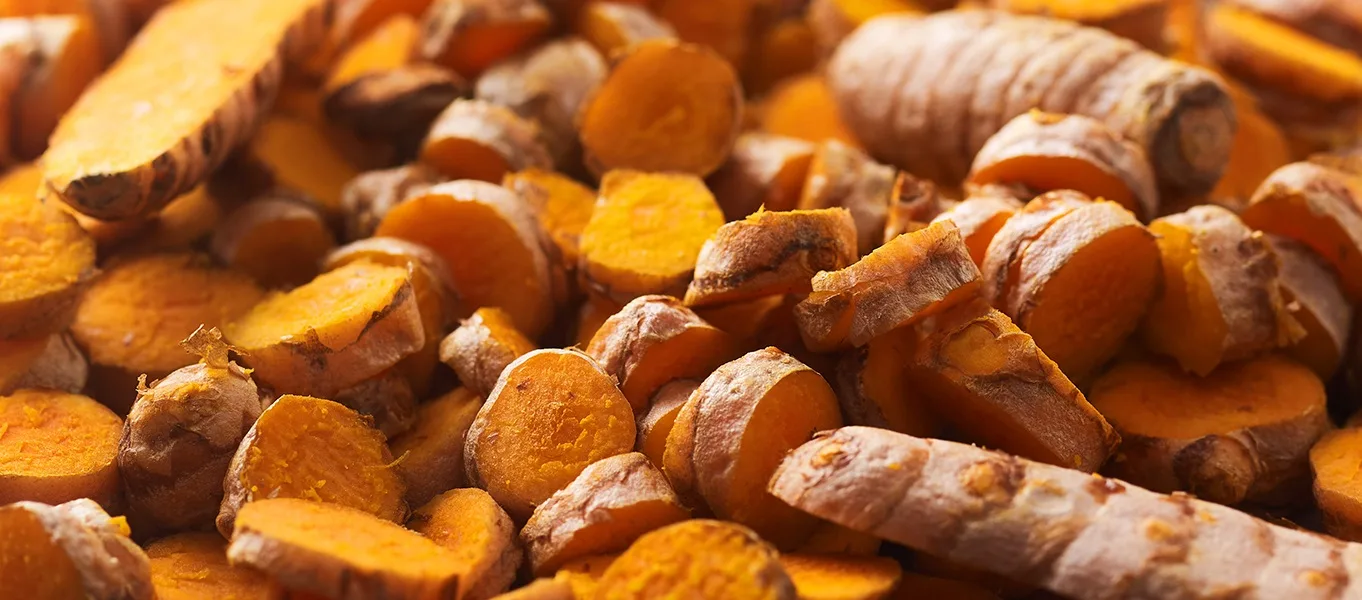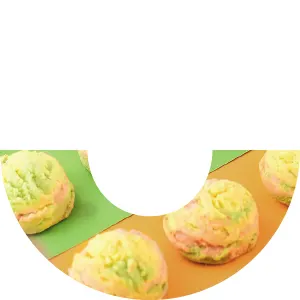Seen around the world | Dec 16. 2021 - 9:08AM
“Ice cream cookie” color considerations
Check out these cookies we found in China
Our expert
Crystal Feng, B.Sc. Food Chemistry
Global Application Center Manager
Cookies shaped like scoops of ice cream automatically produce a smile. Who wouldn’t want a bite of that just to see how it feels in the mouth? These beauties popped up in China. The ones we bought aren’t colored naturally, and we think that’s a missed opportunity. So we’ve done some work to investigate how to give them a naturality boost with colors from nature.
Match the color naturally
We were able to make a very close color match by selecting heat-resistant natural colors. The pink comes from carmine and the yellow from turmeric. The green is a blend of turmeric and gardenia blue. Both the gardenia and turmeric were water-soluble colors so we mixed them into the egg first. The carmine was an oil-soluble liquid that we mixed into the fat. Gardenia is a common color in Asia. In Europe and LATAM, one would likely use a green leaf plant (cu-chlorophyllin) with turmeric. In the USA, the best way to make green is still to use spirulina and turmeric.
There’s more to the eye than color
If bakery isn’t your specialty, you may wonder how to make cookies that remain circular when baked. The secret is to use a fat with a high melting point and then bake at a lower temperature for a longer period. It’s also a good idea to avoid baking powder in order to have more control of the final shape. We baked our 5 cm. / 2 in. wide cookies at 135° C / 245° F for 24 minutes and then turned the temperature down to 110°C/ 230°F and kept them in the oven for 20 minutes more.
Fun combinations
Blueberry crumble, bubble gum, tutti frutti, surfer’s delight, safflower mist, cinnamon fire, cotton candy…cookie scoops like the ones below, could pack powerful flavors. Or you could choose to focus on the visual appeal and give them light vanilla or lemon taste. We see lots of potential in this treat. Can you guess which raw materials we used for each of the below cookie scoops? From beta-carotene to spirulina, we used 6 raw materials to create the below shades, but 9 different coloring products in all. This is an area where it’s a really good idea to confer with your color partner; although there is a limited number of raw materials from which food coloring is made, there are hundreds of color products to choose from. Each is specifically formulated for a particular level of naturality, shade, matrix or to protect the pigment during the production process. If you’d like more information about exactly what natural color products are suited for your particular application, get in touch for a conversation about the best natural food colors for your product development.
In our seen from around the world series, we showcase inspirational products from a color perspective. The manufacturers may or may not be our customers. We analyze the products from our general knowledge and never disclose any private information specific to a product.
All of these use natural colors!
"“Not using natural colors is a missed opportunity” "
Want to know more? Contact us for more information
Contact Us
